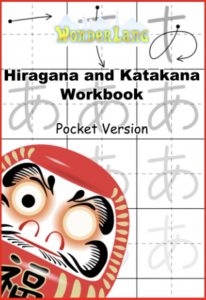Hello,
Here is our second lesson is this new learning Japanese series. This time you will learn how to build a simple question in Japanese.
Here is the link to the first lesson if you haven’t read it yet. We will re-use the same vocabulary as a basis.
Let’s start with some example sentences:
A: ほん です か。
B: はい、ほん です。
A: やすい です か。
B: いいえ、たかい です。
A: hon desu ka. – Is it a book?
B: hai, hon desu. – Yes, it is a book.
A: yasui desu ka. – Is it cheap?
B: iie, takai desu. – No, it is expensive.
Did you find out, based on what we have seen in the first lesson, how a question is built? And how to say “yes” and “no”?
Let’s have a look at these sentences:
- To build a question in Japanese, we have to add the particle か [ka] at the end of the sentence. Note that in written transcriptions of speech such as in manga, novels or song lyrics you might find this か combined with a question mark, or just a question mark, but the standard manner to build a question is by using か.
- A particle is a grammatical word that gives a function to the sentence or words that precede it. You will discover that particles are widely used in the Japanese language, therefore have a careful look at them.
- はい [hai] – the h is expired – means “yes”, and いいえ [iie] – pronounced i-ye – means “no”.
Now, let’s try it yourself!
Use the following words to build sentences of the type “Is it …?” – “Yes, it is …”.
くるま – car
いぬ – dog
げつようび – Monday
あかい – red
Correction:
くるま です か。 〜 はい、くるま です。
いぬ です か。 〜 はい、いぬ です。
げつようび です か。〜 はい、げつようび です。
あかい です か。 〜 はい、あかい です。
And now we are going to build sentences of the form “Is it …?” – “No, it is ….” with the following pairs of words:
くるま; バス – bus
いぬ; ねこ – cat
げつようび; かようび – Tuesday
あかい; あおい – blue
 |
Correction:
くるま です か。 〜 いいえ、バス です。
いぬ です か。 〜 いいえ、ねこ です。
げつようび です か。 〜 いいえ、かようび です。
あかい です か。 〜 いいえ、あおい です。
Here is the end of this second lesson. I hope you enjoyed it and learned new things.
See you soon for the next lesson.
Stéphane
Follow us:
